All day long this past work- and appointment-filled Wednesday I clung to the idea of fitting in a short visit to Rancho Los Alamitos. I’d heard there were some changes with the barns, and there was a new foal, all reasons enough to go. And in late February the noisette roses just might be in early bloom. Plus this was Wednesday, one of the weekdays they’d be open, unlike Monday or Tuesday. I stubbornly held the idea in the foreground of my much-distracted brain, while repeated interruptions and crises did their best to submerge it deep into the background throughout the day. But an hour before close at 5 p.m. I found myself triumphantly slipping a $5 bill into the donation box and sprinting off to find the cactus garden while there was still light. This roughly 8-acre remnant of the huge land grant given to a loyal Spanish soldier in 1784, the genesis story for my hometown, is just 4 miles from my house, but sometimes it feels like you have to move worlds to fit in a visit. But when you do go, what you park behind the gates that insulate the rancho from the press of suburbs, freeways, and CSULB/Long Beach State University is, pardon the cliche, not so much a car but a time machine.

The 19th century adobe ranch house is thought to be the oldest domestic building still standing in Southern California. The twin Moreton Bay Figs have shaded the ranch since 1887.

Staghorn ferns near the base of a palm, backlit scarlet bougainvillea in the distance
What always floors me about the rancho, gifted by its last owners, the Bixby family, to the city of Long Beach in the ’60s, is its humility. With all that oil money to spend in the ’20s (discovered a few years after a drought killed off the largest cattle ranch in the U.S. — long story), Florence Bixby (1898-1961) somehow resisted the fashion of turning the ranch into a depot for Old World antiquities. It is a place fiercely vernacular and true. She may have hired the best landscape architects in the ’20s and ’30s to shape the gardens, like the Olmsted Brothers and Florence Yoch, but the materials were homespun simple, local. Florence Bixby, always credited as the main design influence over the house and garden as they appear today, didn’t loot temples for marble or send out legions of plant hunters for the rarest of the rare, and yet Sunset includes it among 13 of the best public gardens in the U.S. And the rancho’s simplicity can’t be explained away with an argument that Florence was a simpleton who didn’t get out much. The painter Mary Cassatt visited for years, and the home was filled with art. (To put the rancho’s embrace of all things West in context, Cassatt’s brother, Alexander Cassatt, president of the Pennsylvania Railroad, built New York’s magnificent but doomed Penn Station in 1910 based on the Roman baths of Caracalla. The outrage over Penn Station’s demolition in the mid ’60s pretty much launched the modern historical preservation movement, which was right around the time the rancho left private ownership and was gifted to the public.)

The front lawn. The small gate on the left leads to a secret garden adjacent to the house’s interior courtyard. The noisettes weren’t in bloom yet, but the rambling banks rose was, seen just to the right of the clump of bird of paradise and elsewhere in the garden.
While other members of Florence’s tribe, the 1 percenters of her day, hid the working man origins of their wealth, Florence embraced them. This is the modest home of someone with a high sensitivity to the pitfalls of hubris, someone with a resolutely austere but gracious cast of mind. Above all, this is a home, not a showcase for wealth. Florence’s home. And you can still feel it in every footfall. And I so wish they’d occasionally list it for rent with airbnb. (just kidding, Florence!)
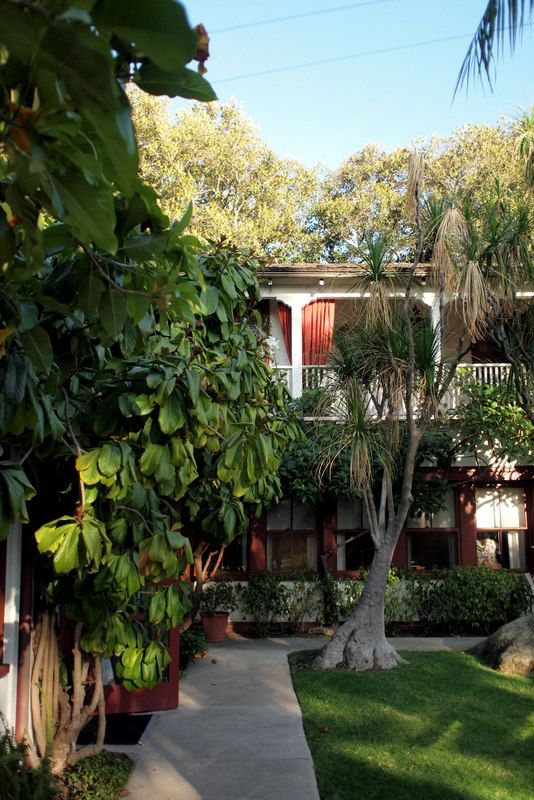
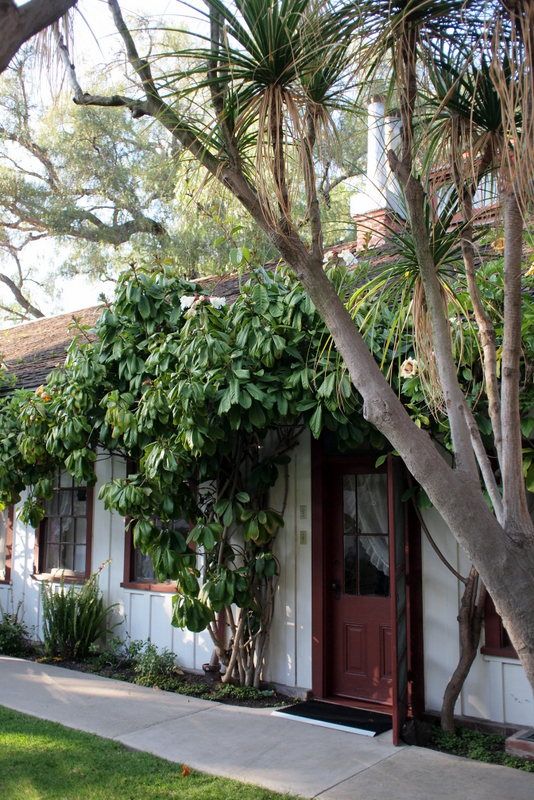
The interior courtyard that horse-shoes behind the house.
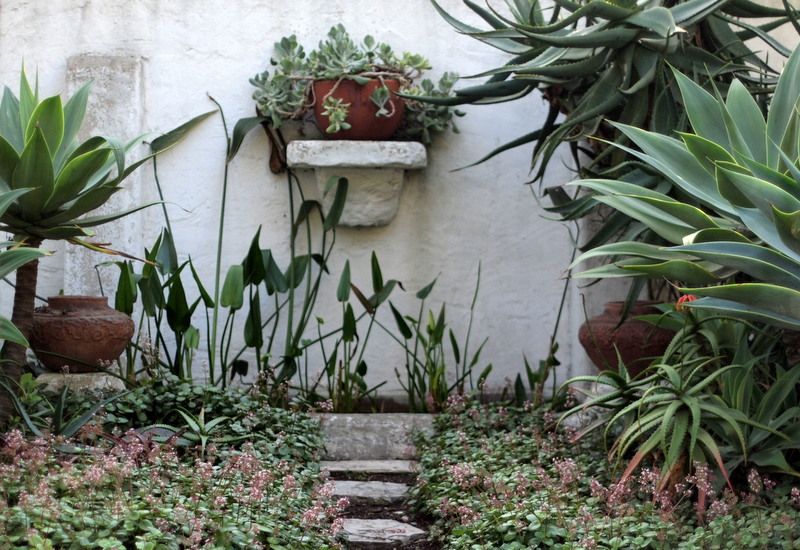
A wall and pool enclosing the courtyard.
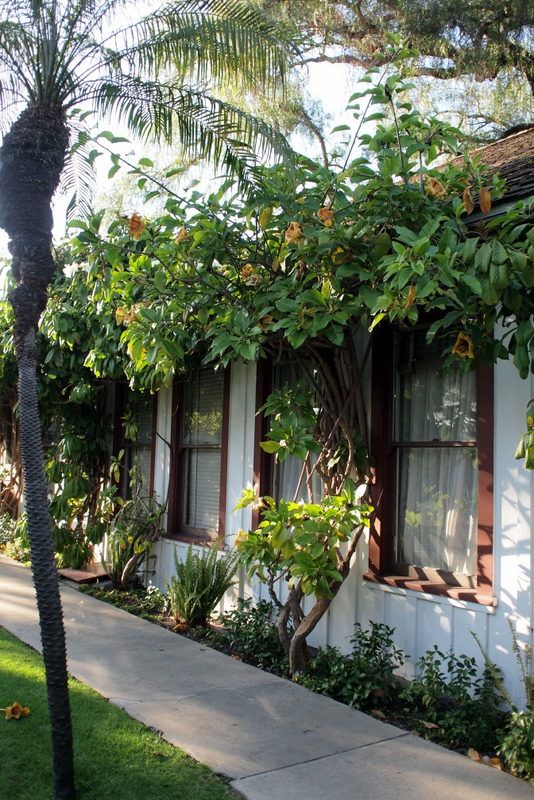
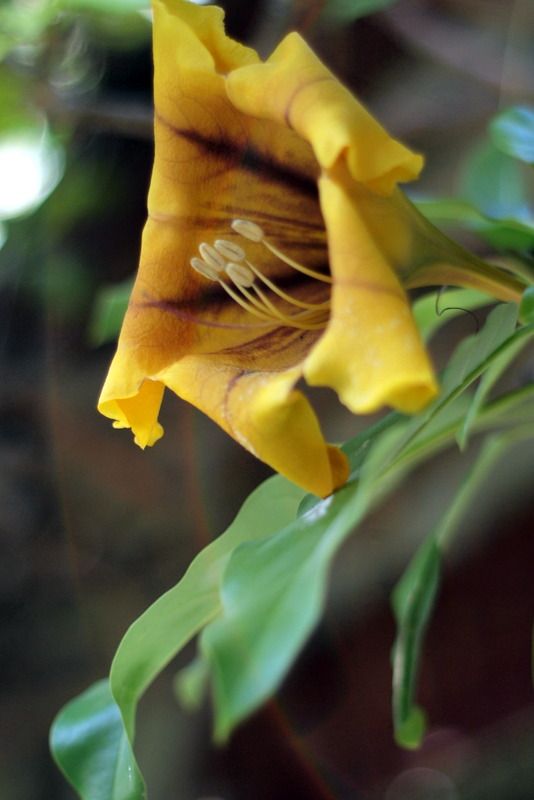
Two big evergreen vines, the Easter Lily vine, Beaumontia grandiflora, and the Cup of Gold vine, Solandra maxima, are trained along the low roofline. For the moment, the smaller white flowers of the beaumontia are being outmaneuvered by the flamboyance of the cup of gold vine in bloom.
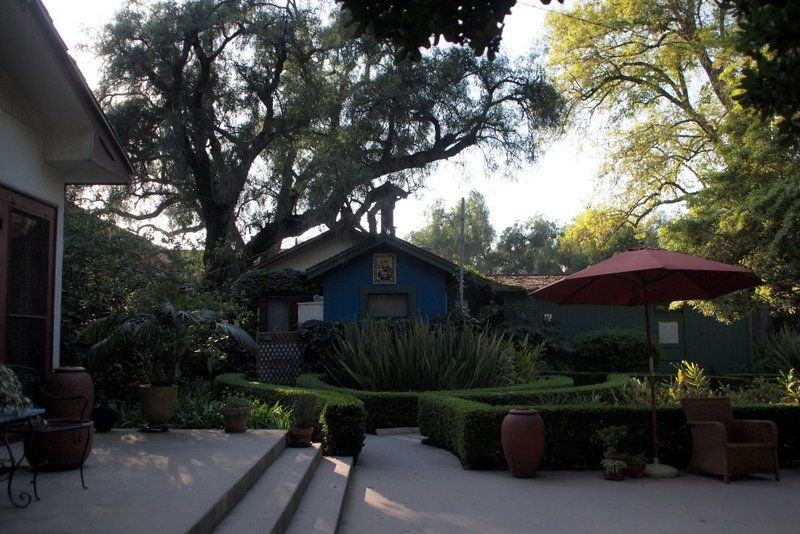
On the opposite side of the house is the Music Patio.

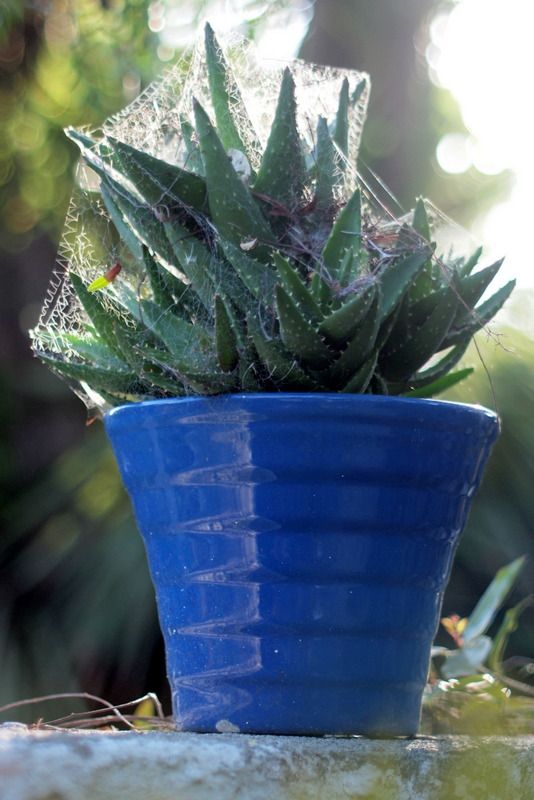
Vintage pottery atop the walls of the Secret Garden.

A white flash of the horse Bristol visible just behind the fence. The barn was moved, at great cost and effort, back to its original location. The now one-year-old foal Preston and its mother Valentina were moved out during renovations. Both are snug inside the barn again. Trees were thinned, leaving those the Bixby family planted, Schinus molle, California pepper trees, to remain.
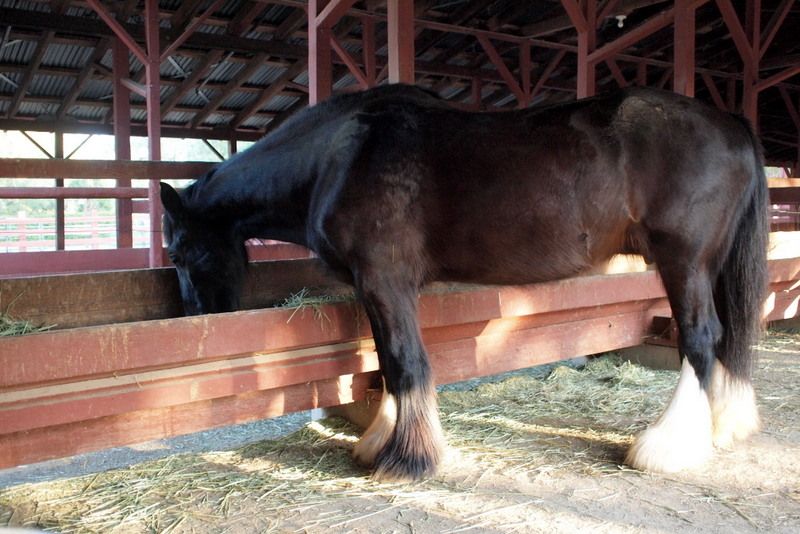
The last of the Shire horses, the breed that powered the ranches of the 19th century.
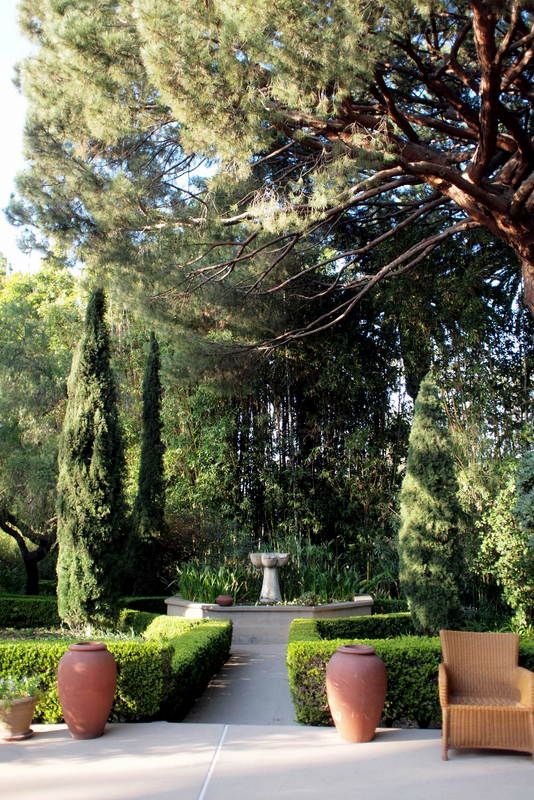
Cypress Steps and patio
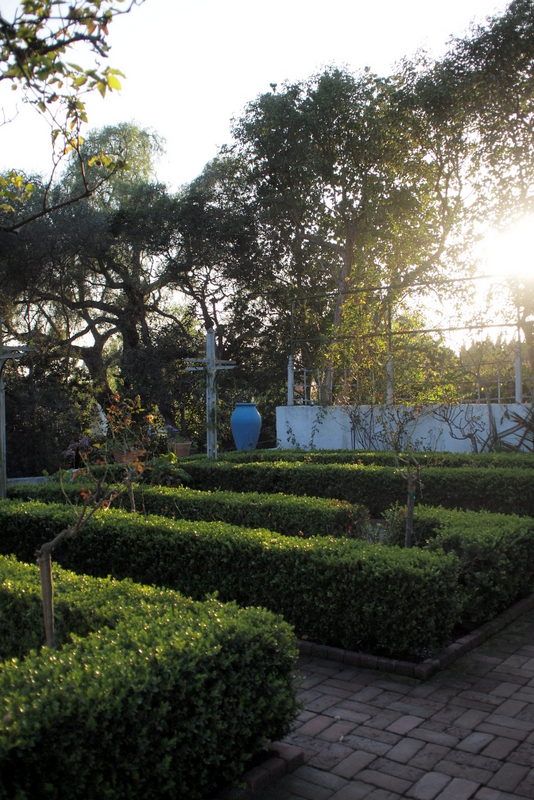
The rose garden. (What else is there to say about a rose garden in winter, other than maybe “Nice box hedging”?)
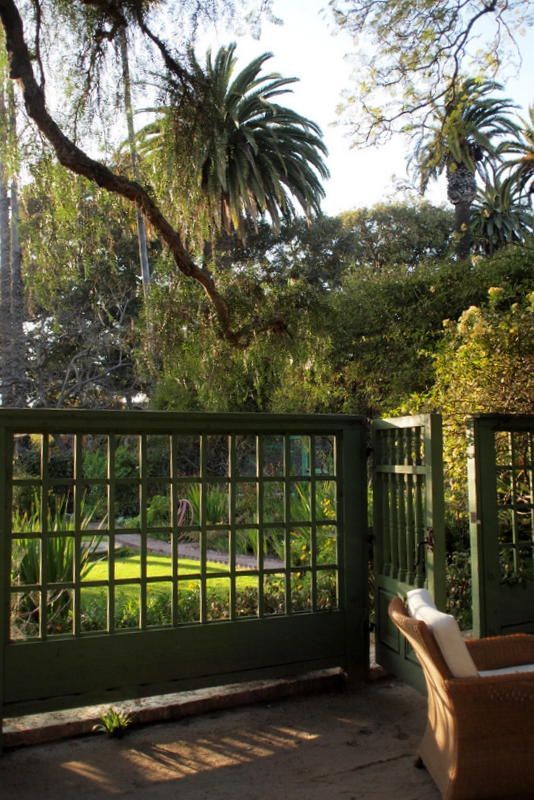
A portion of the garden designed by Frederick Law Olmsted. (correction: The Olmsted Brothers, sons of Frederick Law Olmsted — thanks, Cathy!)
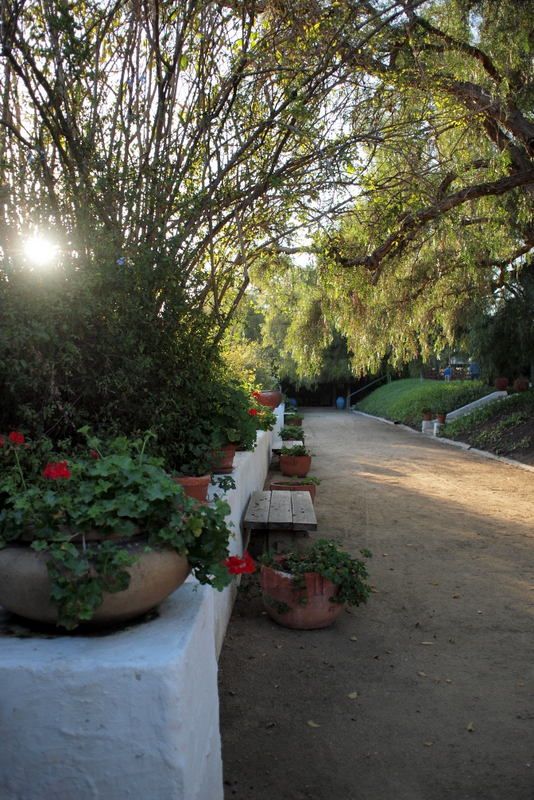

The geranium walk designed by Florence Yoch.
“Yoch’s handiwork can at times seem so spare, so simple that viewers might wonder why clients didn’t think of certain devices themselves.”
(The New York Times)
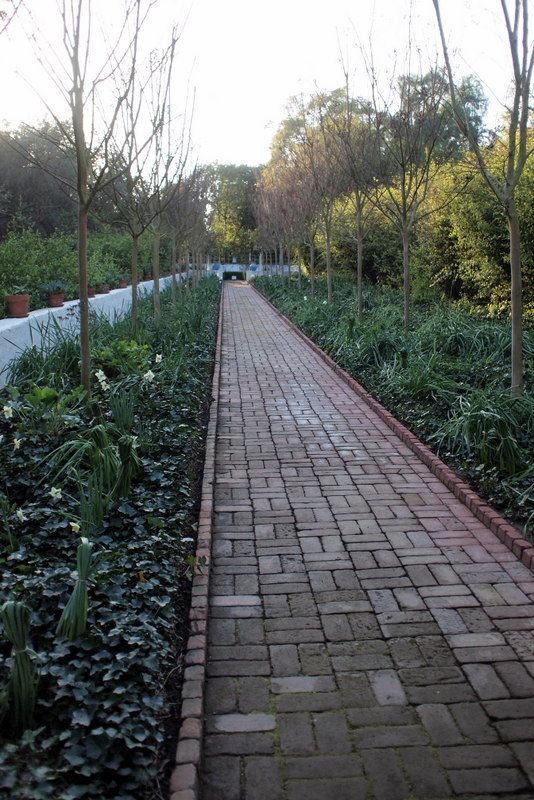
The Olmsted Brothers’ oleander walk connects the rose garden to the cypress steps. The oleanders succumbed to a pest and have since been replaced, possibly by mulberry, but I couldn’t find a reference.

The tennis court. No pool, but a tennis court. I know I’m overly reading into the landscape as psychological profile, but doesn’t that spell “Protestant work ethic” in bold letters?
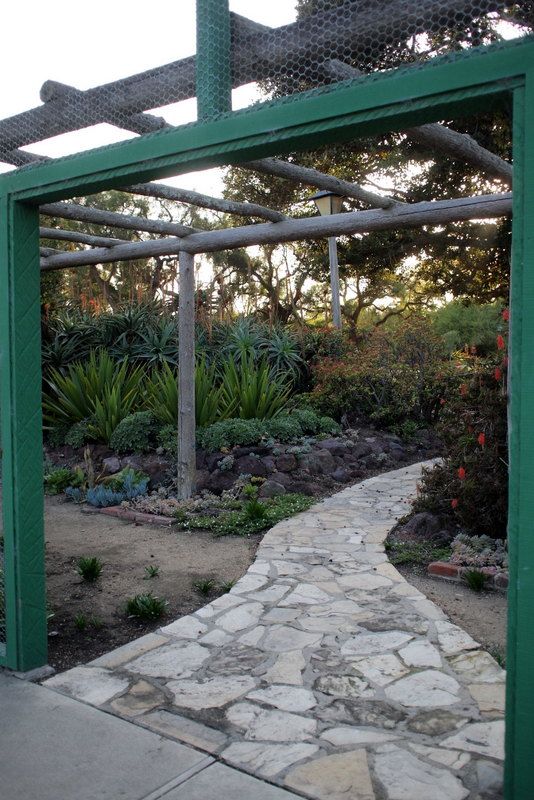
An entry to the tennis court.
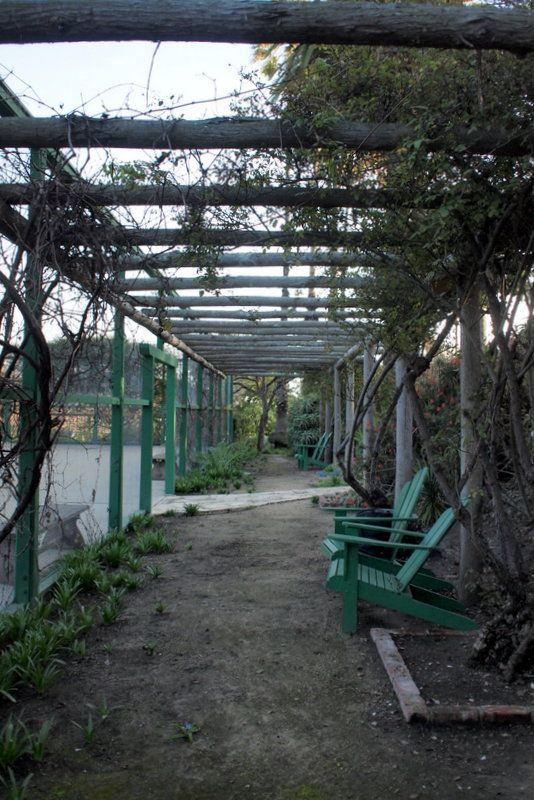
The grape arbor runs the length of the tennis court and leads at one end to the cactus garden and the geranium and oleander walks at the other.
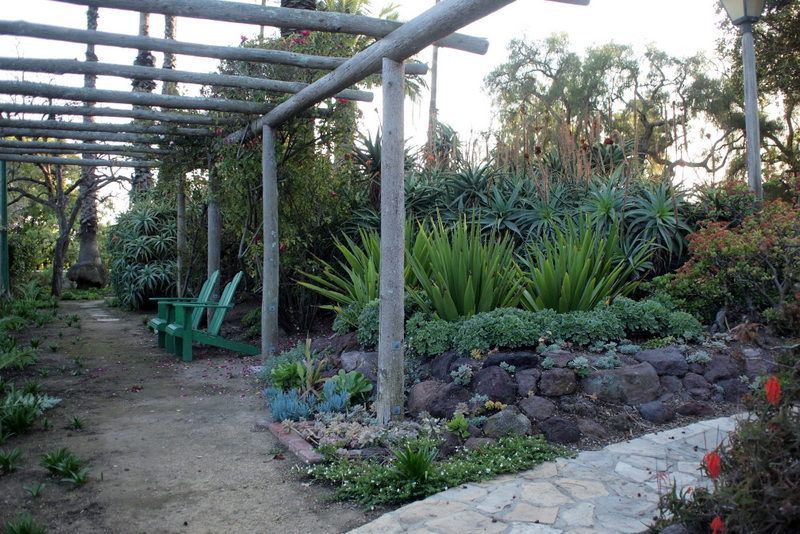
The flagstone path leads, if I’m oriented correctly, to the south lawn and the giant Moreton bay figs.
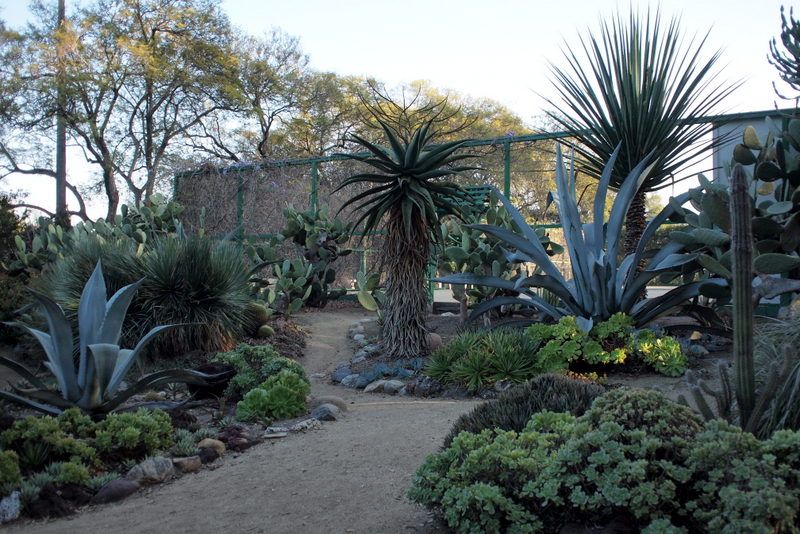
In the Cactus Garden, looking at the fencing of the tennis court.

William Hertrich, the first curator of the Huntington Desert Garden, worked with Florence on the Cactus Garden.
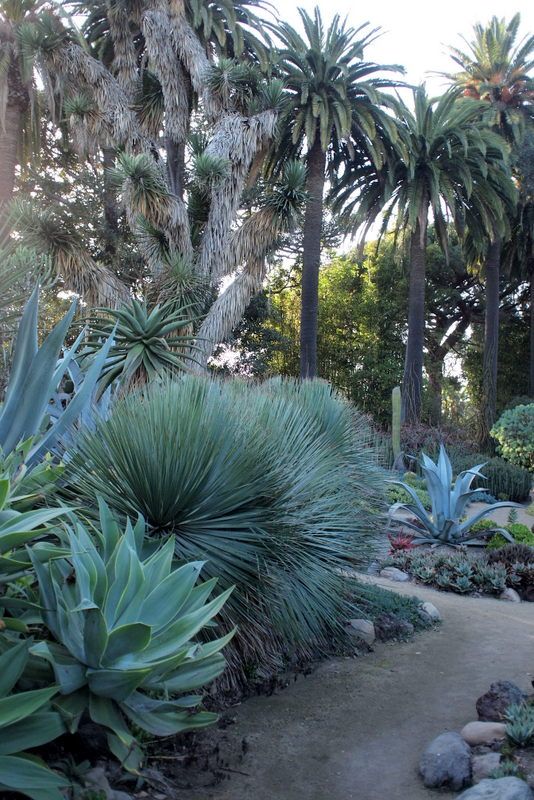

The new educational center, finished last spring, has images of the plants of the rancho on its walls, including Agave franzosinii.
I’ll leave you in the cactus garden to find your way back to where you parked your time machine.
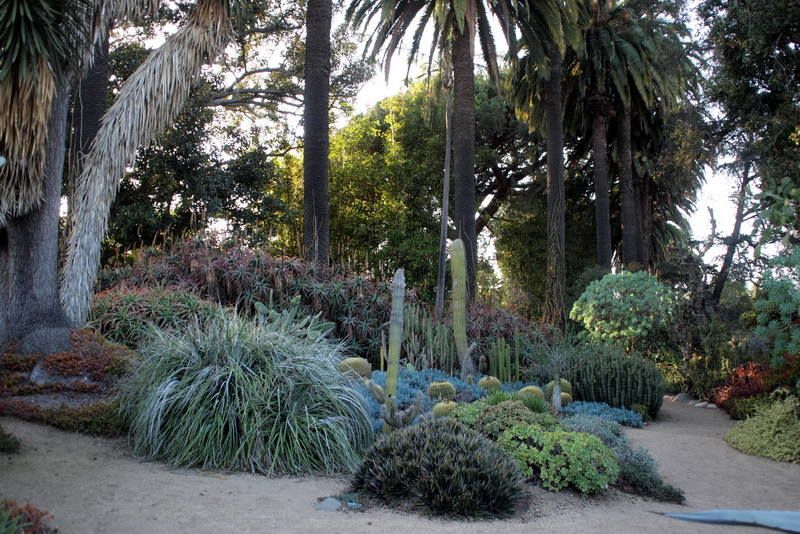


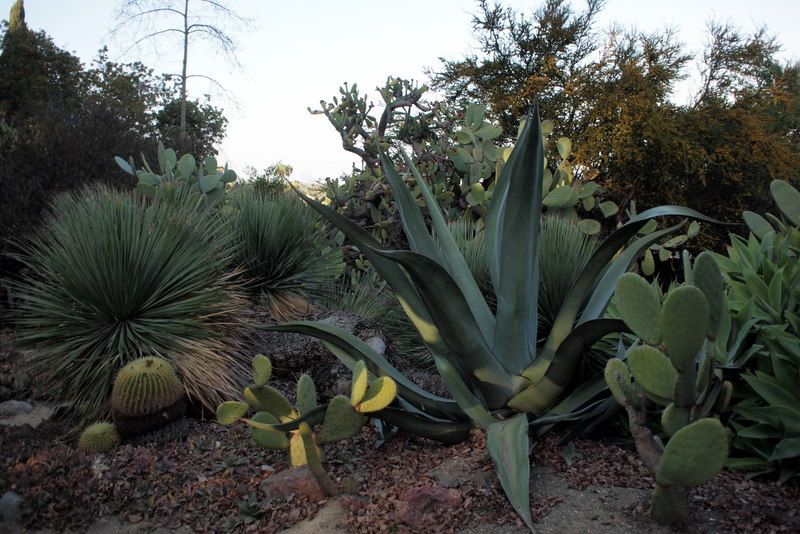
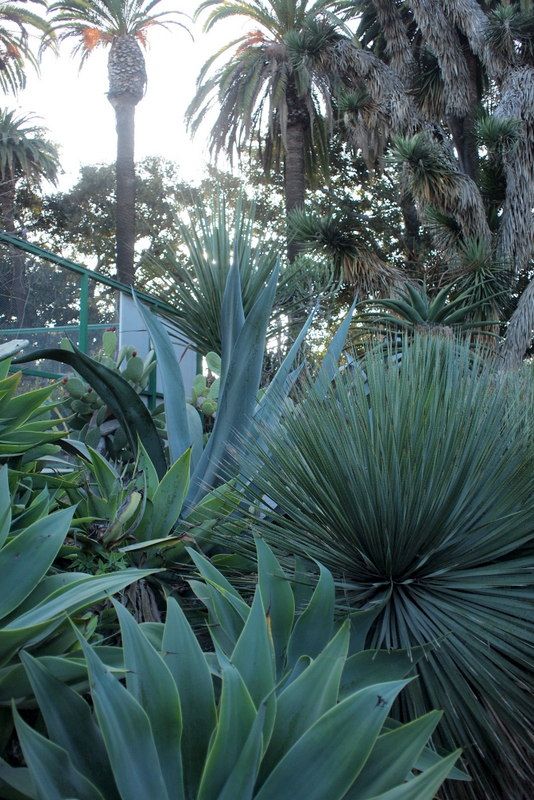
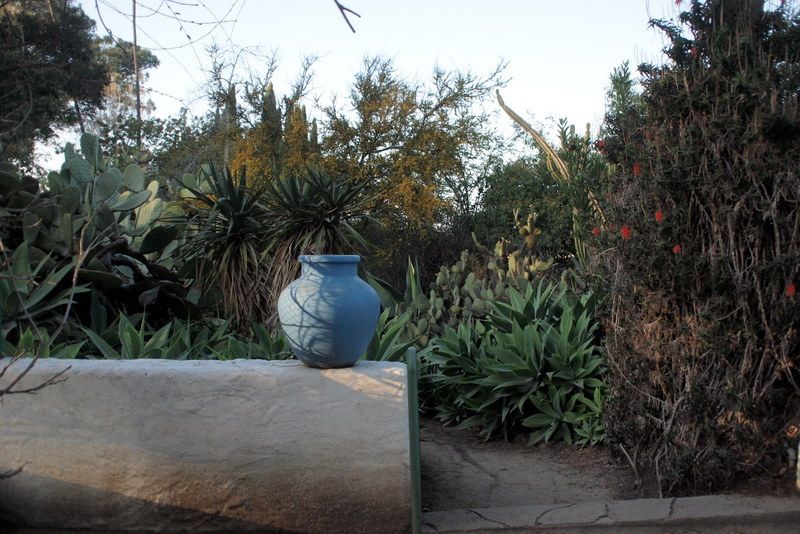
More photos and information on current events can be found on the Rancho’s Facebook page and in this article by Suzanne Muchnic for The Los Angeles Times.


I’m so bummed! I used to live in Long Beach–on Ocean Boulevard–and I never knew about this fabulous place even though I was often in the neighborhood.
Lovely! It’s relatively close yest I’ve never been there – I’ll have to correct that omission. You covered a lot of ground in the house before the grounds closed.
I’ve always wanted to go here! Now I feel like I’ve visited! This photos are simply stunning, and thank you for sharing so much insight into the history and so many stories of this home!
Emily, I still haven’t been to the other local ranchos — I prefer the one with the garden 😉
Kirs, I’ve been in the house before but there was no time this visit. I think house visits are always docent-led.
Jessica, next time you’re in town — and bring your tennis racket!
What a wonderful discovery. I wish I could go to Long Beach tomorrow and visit this gorgeous garden. Thanks for publishing this article.
I was a volunteer gardener at the Rancho 20 years ago, while I pursued a Horticulture and Landscape Design degree. For tge record, Fredrick Law Olmsted did NOT design any part of the grounds, but his SONs, The Olmsted Brothers, did.
Cathy, thanks so much for that clarification.